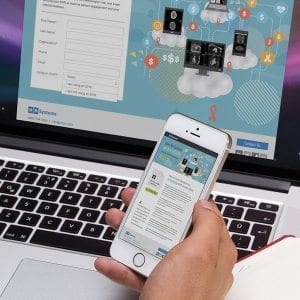 Mobile check-ins are seen as a thing of the past for many brands, but marketers should think again before completely dismissing the potential of mobile check-in apps and campaigns. Granted, mobile check-in is not a viable source of marketing for many companies that do not sell a physical product at a brick-and-mortar store, but there are capabilities within smartphones that should be considered, i.e. geotargeting via GPS data.
Mobile check-ins are seen as a thing of the past for many brands, but marketers should think again before completely dismissing the potential of mobile check-in apps and campaigns. Granted, mobile check-in is not a viable source of marketing for many companies that do not sell a physical product at a brick-and-mortar store, but there are capabilities within smartphones that should be considered, i.e. geotargeting via GPS data.
Mobile check-ins were the “thing-to-do” back in 2009 with the launch of Foursquare. The (previously) wildly popular app allowed users to check-in to specific business locations, often in exchange for a discount or promotional item from the business. By checking-in, users were providing businesses ever-important word-of-mouth advertising via social media. In 2012, Facebook Places launched, allowing users to “check-in” via Foursquare and Facebook. Fast-forward to 2014, and the check-in trend has lost a lot of its foothold. This is evident in Foursquares’ latest redesign that is clearly moving away from check-in as the primary function of the social app. But Foursquare may be giving up too soon, according to recent campaign data collected by Denny’s Restaurants.

Denny’s recent location-specific campaign data suggests that mobile check-in promotion is a viable marketing technique. Denny’s teamed up with Atari for their latest mobile campaign to promote a mobile game that turns breakfast food into game items. To promote game downloads, Denny’s ran a check-in campaign on SessionM’s network of apps, where in exchange for their check-in location, the user was served an ad that would prompt them to download the game app, enter a sweepstakes, or see new menu items. Surprisingly, 42 percent of users who checked-in to a Denny’s followed through and downloaded Denny’s game app. Of those 42 percent, 26 percent of people checked in to a Denny’s they had never been to before, and 9 percent of those people had never been to a Denny’s before. The overall analytics showed that Denny’s check-ins increased 40-50 percent thanks to the mobile campaign.
Just because Denny’s happened to have a “successful” mobile check-in campaign does not necessarily mean that check-in campaigns are where mobile marketers should dump the majority of their ad spend. But, it does raise the thought that mobile geotargeting is not dead. Perhaps the next-generation of check-ins should move past requiring the user to perform an action.
Wendy’s Restaurants do not deploy standard check-in campaigns, rather they utilize geo-triggered mobile features often built in to mobile websites. The geo-triggered features ask users to grant websites access to their location the first time they visit the site. More often than not, users click ok, which gives mobile sites the green light to collect location data and see how consumers use their smartphones. Wendy’s uses this data to serve ads in real time and also glean insight as to where the next Wendy’s Restaurant should open.
Whether a brand chooses to deploy mobile check-in campaigns, or utilize geo-triggered campaigns, it is apparent geotargeted tactics can be very successful. Brands need to consider the power in leveraging word-of-mouth advertising that can be achieved through check-in marketing tactics. One thing is certain, geotargeting cannot be ignored, and is a major component of any mobile marketing campaign.








